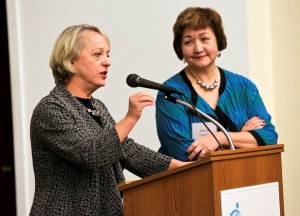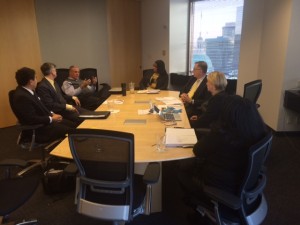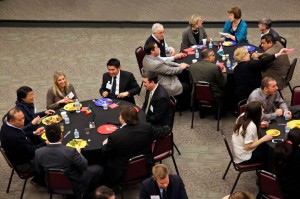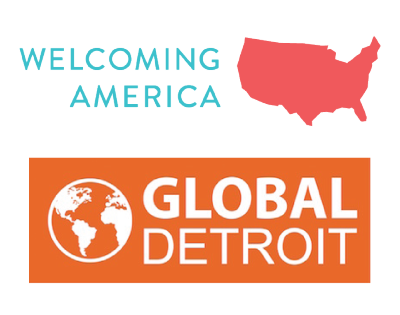Global Cleveland gets first-hand look at St. Louis approach
From the Desk of Joy Roller
It’s amazing what one organization can learn from another if given the opportunity. The WE Global Network provided Global Cleveland President Joy Roller and Director of Development and Outreach Richard Konisiewicz such an opportunity to get a first-hand look at how St. Louis is approaching the issues of immigration and talent attraction when it underwrote a city-to-city visit in early January. The Network is a group of over a dozen regional economic development initiatives from across the Midwest working to tap into the economic development opportunities created by immigrants.
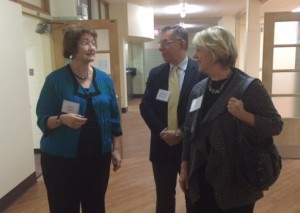 One insight gained from Global Cleveland’s visit to St. Louis is the difference in how the two organizations began. Both started after the release of the 2010 U.S. Census. With continued population decline reported in both legacy cities, leaders in the metro regions created non-profit organizations to attract and welcome international talent. St. Louis created the Mosaic Project by hiring Elizabeth Cohen and housed the effort inside the World Trade Center, part of the St. Louis Regional Business Partnership (similar to Northeast Ohio’s TeamNEO). At the same time, in Cleveland, with support from Mayor Frank Jackson, corporate and philanthropic leaders, launched Global Cleveland as an independent non-profit organization.
One insight gained from Global Cleveland’s visit to St. Louis is the difference in how the two organizations began. Both started after the release of the 2010 U.S. Census. With continued population decline reported in both legacy cities, leaders in the metro regions created non-profit organizations to attract and welcome international talent. St. Louis created the Mosaic Project by hiring Elizabeth Cohen and housed the effort inside the World Trade Center, part of the St. Louis Regional Business Partnership (similar to Northeast Ohio’s TeamNEO). At the same time, in Cleveland, with support from Mayor Frank Jackson, corporate and philanthropic leaders, launched Global Cleveland as an independent non-profit organization.
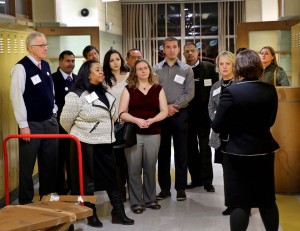 St. Louis created a master plan for attracting and welcoming immigrants and new talent to the region and integrated it into all of the city’s and region’s economic development organizations. This approach includes integrated branding using the “STL is…. One,” “STL is… Talented,” “STL is… Mosaic,” etc. logos for each of its economic organizations. This collaborative approach, and the 22-member broad-based Steering Committee, provides the Mosaic Project access to the highest levels of regional economic, corporate and higher education decision-makers and the means to get things done.
St. Louis created a master plan for attracting and welcoming immigrants and new talent to the region and integrated it into all of the city’s and region’s economic development organizations. This approach includes integrated branding using the “STL is…. One,” “STL is… Talented,” “STL is… Mosaic,” etc. logos for each of its economic organizations. This collaborative approach, and the 22-member broad-based Steering Committee, provides the Mosaic Project access to the highest levels of regional economic, corporate and higher education decision-makers and the means to get things done.
Some highlights of the Mosaic Project’s programming include the:
- Fellows Program, launched in 2006 inside the Regional Chamber of Commerce. The yearlong program takes a holistic approach to preparing minorities for corporate, civic and non-profit leadership roles.
- Mosaic Project’s Professional Connectors Program, modeled after Halifax Connector Program in Canada, connects skilled immigrants to community volunteers who can help them.
- Gateway Connections, an orientation to the city for new professionals by the Regional Chamber. Newcomers meet four to six times a year creating networks of friends and professional contacts.
- Mosaic Project’s International Student Corporate Hiring Program works in conjunction with the Regional Business Council and with local college and university professionals, to guide international students to employers willing to hire them.
The International Institute of St. Louis is one of the most impressive aspects of the city’s efforts to welcome and attract foreign-born talent. Under one roof, the 100 year-old center provides a comprehensive array of adjustment services that annually reaches more than 7,500 immigrants and refugees from 75 countries. Newcomers can take advantage of job preparation programs in housekeeping, nursing assistant, sewing and other occupations. To accommodate its growing offering of services, the Institute is currently moving to a new 136,000 sq. ft. campus of five buildings.
The Institute is currently creating a series of eight-week classes for pathways to guide skilled refugees and immigrants in the healthcare and engineering fields in order that they can work in the professions in which they have been trained. Enrollees will pay for classes on a sliding fee scale to learn computer and other soft skills. As part of St. Louis’s holistic, master plan, once the students complete their classes, they will be paired with a Professional Connector and directed into the Mosaic Project’s Gold and Silver Employer programs which identify those companies open to employing international talent.
In addition to meeting with the leaders of St. Louis’s immigrant and talent attraction programs, Mosaic Project Executive Director Betsy Cohen, took Joy and Richard to the Cortex Innovation Community, a vibrant 200-acre innovation hub and technology district. After visiting the unique Cambridge Innovation Center (CIC) 4240 incubator that’s run more like a boutique hotel and meeting with leaders of bio-tech and IT incubators, it was no surprise to the Cleveland visitors that on the day we left St. Louis it was named the number one “Best Start-Up City in America.”

